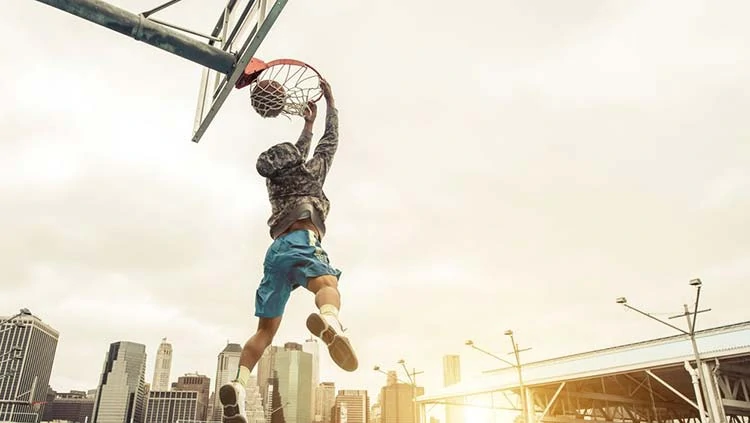Don’t Over Train if You Want to Jump Higher.
We’ve all heard the sports cliche’s.
No pain no gain – You get out of it what you put in – Go hard or go home – Give it 110%.
So when wanting to learn how to jump higher and get the most from your ability you may have realized that you are going to have to push yourself. I mean really dig down deep and find stamina and determination you never knew you had right? Absolutely.
To get to a 40 inch plus vertical jump, it’s going to take much more than just coasting into the gym and throwing a few weights around, getting some reps in and heading home. You have to go until your body fails and then go some more. Hit the ploys like it’s your last chance at making the Olympic team and do that last set of sprints even when you feel like you will never run again.
So now you have the right mind set and you’re putting in the hard work. Results are starting to show up and you realize that this is actually going to work. You get so excited you start thinking, if I’ve gained 6 inches so far, how much will my vertical improve if I train longer and do more, more, and more. Maybe you even try to incorporate a second vertical jump program into your training.
BOOM… Big mistake!
Over training is the single biggest mistake vertical jump athletes make. They want to be able to dunk so bad, they are willing to do almost any amount of work to reach that goal. What they don’t realize is, they are not getting stronger or faster by doing plyometric, sprints and weights, they are breaking down muscle. Only with enough rest and recovery is the new muscle added and the actual gains made.
What we have here is a classic case of over training. What usually follows is actually a slight drop in ability. Your vertical goes down a few inches. Your 40 times are a little slower and you can’t get the squat reps in that you could last week.
The only things causing this performance dip besides over training are poor diet or illness and these are fairly easy to rule out. You generally know if you are sick and you certainly know what you’ve had to eat in the last 72 hours.
So if you have determined that you are over training or if you just want to guard against over training in the future, here are some warning signs to look for and some training tips for staying on track toward your goal of jumping higher and hanging out above the rim.
Signs you might be over training:
- A general tired feeling in your legs or all over your body.
- A lack of explosiveness when you try to jump.
- Your vertical has dropped by a few inches or more.
- Your sprint times are off by a little.
- You’re not able to do the same number of reps as before when lifting weights.
Tips to help you avoid over training:
- If you’re not sure if you feel like working out, rest.
- When lifting weights if you feel like you are slowing down (becoming less explosive), stop and wait for the next set.
- If you’re out of breath when doing plyometric, stop and wait for the next set.
- Actually rest on a scheduled rest day. Don’t do anything physically strenuous.
- Recovery has everything to do with diet and sleep. Make sure you are getting good nutrition and 8 hours of good sleep.
So by all means go all out with maximum intensity every time you hit a training session. Just be aware of how you are feeling during each exercise, in between sets and recovery days.
Work hard, Train hard.
Frequently Asked Questions
How To Use the Power High Pull?
To perform a high pull you stand with your feet about shoulder width apart. The barbell should be located directly in front of you and just in front of your shins. Grip the bar with an overhand grip. Your hands will be positioned just to the outside of your legs. Wrap your thumb under your index finger and middle fingers. Your back should be slightly arched. Get the bar lifted above your knee and stand up so that your hips are shifted forward and pull the barbell straight up.
How long does it take to increase Higher Jump?
The amount of time that it will take to increase your high jump is going to depend on the condition you are in and the amount of time you devote to increasing your strength and power. To increase your high jump you will need to increase the strength that you have in your legs by doing muscle building exercises like squats, and lifting weights. As the amount of dead weight that you can lift increases so will the height of your jump.
What are the best exercises to jump higher at home?
There are a lot of exercises that you can do to help increase your jump height. You should definitely include the jump squat with 8 reps and then a 2 minute rest, the deadlift with 6 to 8 reps, the box jump with 6 to 8 reps, and a barbell good morning. Do each of these three to four times each day.

